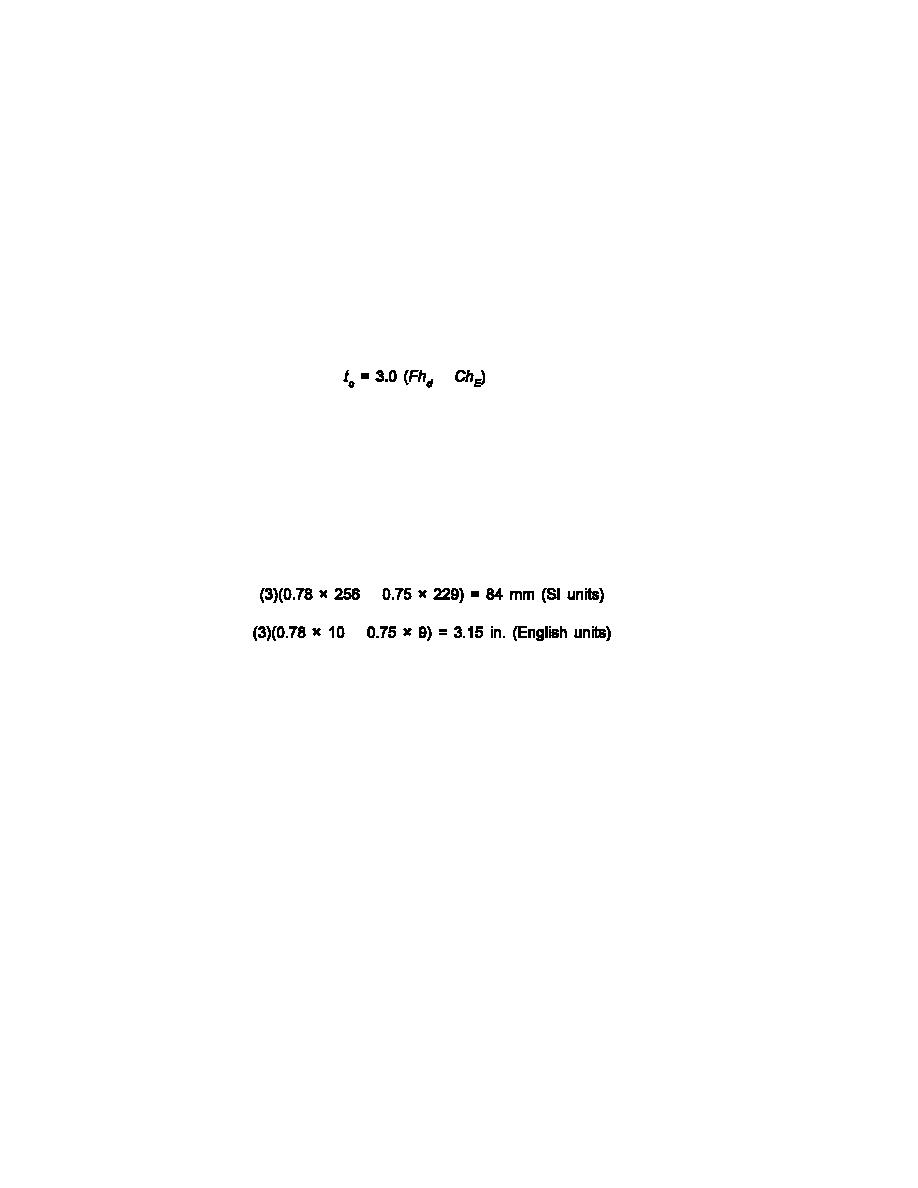
UFC 3-260-02
30 June 2001
reflective cracking. The other techniques discussed above have given mixed results or have not
been independently evaluated by the military.
f. Example of Nonrigid Overlay Design. An existing rigid pavement will be strengthened to
support 75,000 operations of the C-130 aircraft using a nonrigid overlay. It is a type B traffic area.
The existing rigid pavement is 229 millimeters (9 inches) of plain concrete on a 152-millimeter
(6-inch) crushed aggregate base and has the following properties: R = 4.8 MPa (700 psi), k of
subgrade = 41 MN/m3 (150 pci), and C = 0.75. The k value on top of the base course is
determined to be 54 MN/m3 (200 pci) from Figure 8-1 using the subgrade k of 41 MN/m3 (150 pci)
and 152 millimeters (6 inches) of base course. The required thickness of nonrigid overlay is
determined by
&
(17-5)
To determine F, convert passes of the C-130 into coverages using the pass per coverages ratio of
8.54 from Table 17-1. The 75,000 passes convert to 1,171 coverages. Therefore, for a k of
54 MN/m3 (200 pci) and 1,171 coverages, the F factor from Figure 19-2 is 0.78. Values of hd,
determined from Figure 12-5 with the design gross aircraft weight of 79,380 kilograms (155 kips),
flexural strength of 4.8 MPa (700 psi), and k value of 54 MN/m3 (200 pci) is 256 millimeters
(10 inches). Since the existing pavement is concrete, then the equivalent thickness hE is equal to
the existing thickness of 229 millimeters (9.0 inches). Therefore, the required overlay thickness to
is:
&
&
Use the minimum thickness of 102 millimeters (4 inches).
10. NONRIGID OVERLAY ON FLEXIBLE PAVEMENT. After a determination has been made that
strengthening of a flexible pavement is required, design the overlay thickness as follows:
a. Determine the total thickness of the section, and the thickness of the base and surface
courses from the criteria in Chapter 12 or 13 for the design aircraft. Compare the new design
requirements with the existing section to determine the thickness of overlay required.
b. Where the in-place density of the existing material is less than required, the overlay
thickness should be increased or the low-density material recompacted. In some instances this is
possible by using heavy rollers on the surface to compact the underlying layers. However, if the
moisture content of these layers, particularly if cohesive, is above optimum, their shear strength
may be decreased by heavy rolling. Heavy rolling, also, will frequently damage the surface layer if
brittle. The decision to excavate and recompact low density layers or to increase the overlay
thickness should be examined very carefully in each case. Factors to be considered in this
examination are depth of water table, subgrade soil properties, and the performance of the existing
pavement.
c. Overlaid asphalt courses must meet the quality requirements for their position in the
strengthened pavement.
17-15



 Previous Page
Previous Page
